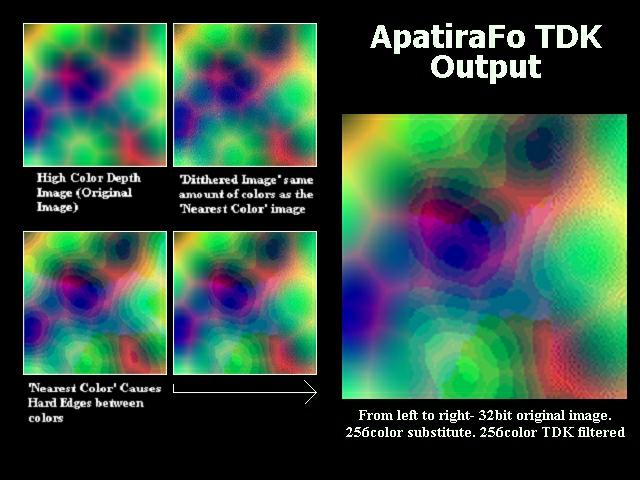 |

Submitted by , posted on 02 December 2000
|
 |

Image Description, by

Hello! This screen shoot is the output from my software encoded TDK
(texture dither kernel) which I am implementing into my 3D OpenGL Engine for use
with an upcoming fighting game- ApatiraFo. You might wonder why I dont just use
OpenGLs blending capabilities. Well, I have been looking into the speedups of
many popular console games and have decided that if I used 256 colored bitmaps,
my game/engine runs a hellofalot faster. If I just used OpenGL, I ended up getting
crude blocky images, so
.. I used a _quick_ TDK software filter pass right when I
loaded up my textures to convert my nice 32bpp art to the 256bpp substitute my engine
uses and I must say, the results were quite impressive. ;). After I post an image of
another cool speedup that I have been working on, Ill post an image of the results
of this TDK running in place with a sample ApatiraFo session in Acton.
|
|

